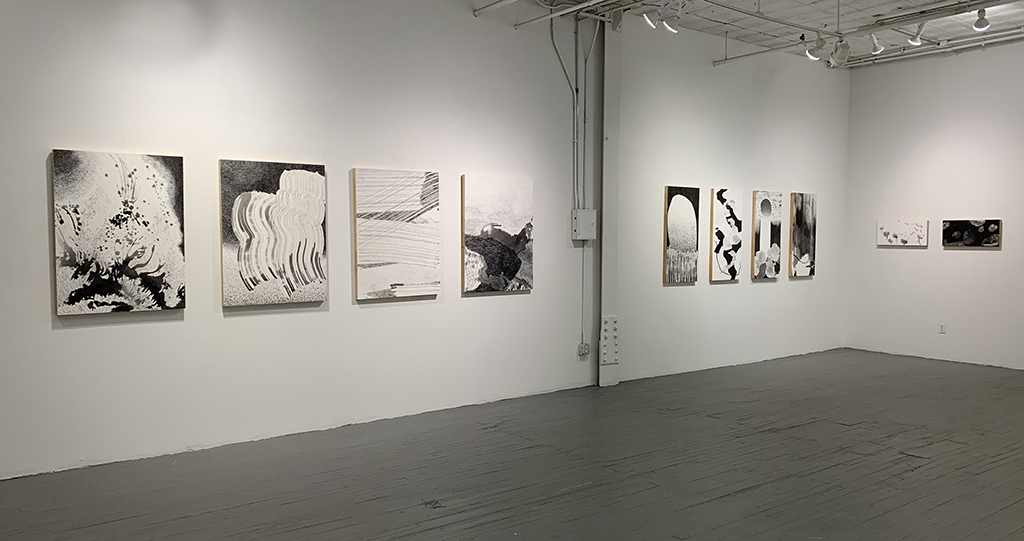Nishiki Sugawara-Beda: Somewhere Around There
Amos-Eno Gallery, Brooklyn, NY
Simonetta Moro, New York
, March 19, 2022
Artist; Associate Professor and Director, Institute for Doctoral Studies in the Visual Arts (IDSVA)
smoro@idsva.edu
In these times of uncertain affiliations and ideological divide, it is increasingly difficult for artists to remain true to themselves, not to be pulled in this or that direction in order to satisfy the trends of the moment. One artist who succeeds to do so without apparent effort is Nishiki Sugawara-Beda, whose recent paintings are on view at Amos Eno Gallery in Brooklyn, NY (March 3-27, 2022).

Somewhere Around There is the title of her new solo exhibition featuring a number of Sumi ink paintings on paper and panels part of the series KuroKuroShiro (“black-black-white” in Japanese). They consist of delicate and evocative abstract paintings suggesting natural and interior spaces, making innovative use of traditional Japanese mediums and formats, from the tall elongated vertical scroll on rice paper to the horizontal landscape format on gessoed panels.
As she recently elaborated in a talk given at the College Arts Association, Sugawara-Beda’s connection to her native culture is expressed through multiple references: Japanese calligraphy, for instance, is an entrance point to understand her own culture; in her words, in calligraphy the ‘spirit’ of the word is transmitted to paper. Of equal importance is the concept of being “in touch with the land” – which she does through the study and practice of Sumi ink, a material that she is deeply connected to by way of ancestry and cultural affinity.
Sumi consists of soot and animal glue. The simplicity of these materials is counterbalanced by the complexity of the process through which they need to be subjected in order to produce a large variety of exquisite shades of black. Sugawara-Beda explained how the animal diet affects the glue and by consequence the color of Sumi; and how the type of soot has of course a great impact on the final color as well. To better understand her materials, for the last couple of years the artist engaged with experiments reminiscent of ancient alchemical pursuits in the chemistry lab at SMU (where she teaches in the School of Art) collecting soot from different sources. One of these sources was provided by burning red pine at the Tusen Takk foundation, in Leland, MI, where she spent time on an artist residency for a few weeks in the summer of 2021, as well as collecting soot from a chimney where only local wood is burnt. She realized that different trees yield different kind of soot (more or less oily, for instance), and took advantage of these diverse environments to create a very peculiar kind of site-specific works.
After collecting the soot, the artist grinded it with a glass muller just like one would do with powder pigment. Through this patient and slow process that exists on a material as well as a conceptual level, Sugawara-Beda incorporates the land physically, materially and observationally. Physically, because the prime matter for her paintings are to be found in nature itself; materially, because the raw materials need to be transformed into actual pigment; and observationally, because nature serves also as a subject matter for her paintings, through their reference – more or less obvious, but never literal – to landscape and her surrounding environment.
There is also an ecological theme running underneath her paintings: soot is generated by burning of fossil fuels, a fact that in our era of the so-called Anthropocene calls for a particular responsibility of the artist using these tools. Sugawara-Beda is perfectly aware of this, and wants in her own way to give back what we take from the environment, by harnessing the outcome of this act and highlighting the beauty of soot, not its negative connotation. As she effectively put in her talk, “we borrow materials from the land, and through painting we are releasing collective spirit and love.”